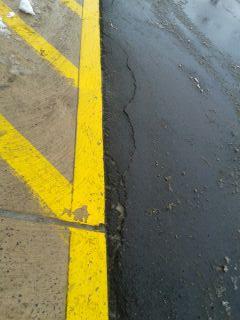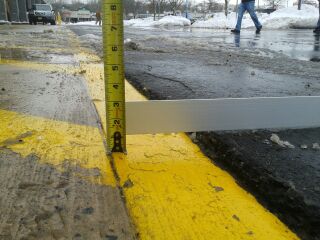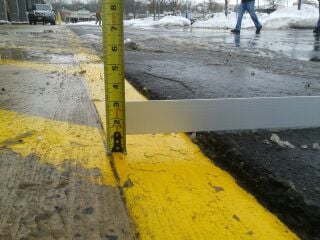What Causes Asphalt Forst Heave


Frost heave is a common problem in colder climates during the winter months. You may notice your asphalt heave as the winter temperatures fluctuate from cold to warmer spells. The cause is the freezing and thawing that comes with above and below freezing temperatures that start the formation of ice in pockets under the asphalt. Ice forms in the soil under the asphalt and push the surface up as they grow. They are fed from every direction and will continue to grow as long as there is an available water supply. Silt or clay soils are more susceptible to frost heave than better draining soil mixtures.
Depending on the severity of the temperature, the asphalt can heave as high as 2-4”. Frost heave is most common in asphalt parking lots where the asphalt meets the concrete. When the asphalt is installed up to the concrete, there is a joint which remains. Although the joint looks small, it can allow enough water to infiltrate and work its way under the asphalt to heave.
Frost heave will take care of itself in many situations, once the temperatures raise. Even if the asphalt lowers back to the proper elevation, you will most likely experience cracking and alligator cracks in the area as a pocket will remain below the asphalt. If the asphalt is still high after the winter or it begins to crack, the severity will dictate whether it should be lowered by infrared repair or sawcut repair.
Sometimes frost heave appears in locations which are heavily pedestrian trafficked and cannot wait until the spring to remediate. If you have an immediate need as a Life Safety Issue is present, call 1-877-349-2774 so we can assist you with making immediate repairs the same or next day in most cases.
Uneven Asphalt, Asphalt Lifting At Concrete, Frost Heave, Asphalt Frost Heave
FOR IMMIDIATE SERVICE CLICK BELOW











Leave a Comment